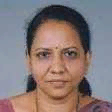
Sheela Shankar
Work place: Department of Electronics & Communication Engg, KLE Dr. M. S. Sheshgiri CET, Udyambag, Belgaum-590008, Karnataka, India
E-mail: kle.ec.sheelakore@gmail.com
Website:
Research Interests: Engineering, Process Control System, Image Processing, Computational Engineering, Computational Science and Engineering
Biography
Prof. Sheela Shankar has completed her Bachelor of Engineering in Electronics and Communication from BIET, Davangere, Karnataka, India. She has pursued her Masters in Electronics and Control Engineering from Birla Institute of Technology and Science, Pilani. Currently she is working as an associate professor in the department of Electronics and Communication Engineering, KLE Dr.M.S.Sheshgiri College of Engineering and Technology, Belgaum, Karnataka, India. She is a life member of ISTE. Her areas of research includes image processing, communication engineering and control engineering.
Author Articles
Biometric Verification, Security Concerns and Related Issues - A Comprehensive Study
By Sheela Shankar V.R Udupi Rahul Dasharath Gavas
DOI: https://doi.org/10.5815/ijitcs.2016.04.06, Pub. Date: 8 Apr. 2016
There has been many attempts to make authentication processes more robust. Biometric techniques are one among them. Biometrics is unique to an individual and hence their usage can overcome most of the issues in conventional authentication process. This paper makes a scrutinizing study of the existing biometric techniques, their usage and limitations pertaining to their deployment in real time cases. It also deals with the motivation behind adapting biometrics in present day scenarios. The paper also makes an attempt to throw light on the technical and security related issues pertaining to biometric systems.
[...] Read more.Achieving Robustness in Face Recognition by Effective Feature Acquisition
DOI: https://doi.org/10.5815/ijigsp.2015.09.06, Pub. Date: 8 Aug. 2015
In the past few decades, face recognition has been a widely researched topic, since it is a robust means of authentication. Extraction of features from the face images during face recognition is a very challenging task. Hence, proper selection of appropriate feature extraction algorithms is vital in this regard. Many robust feature extraction techniques do exist. But their proper selection and combination also plays an utmost role. In this study, 2D face recognition was achieved using the combination of local binary pattern (LBP), principal component analysis (PCA) and Support Vector Machines (SVM). Along with retaining most of the information, PCA is used to reduce multidimensional data to lower dimensions. LBP was mainly used to tackle the problems arising due to expressions. As the facial expression changes, the effect gets prevalent on the rest of the organs of the face. Similarly, the intensity of the corresponding pixels of images also changes. Hence, this study aims to overcome these challenges by applying PCA and LBP algorithms on face images to increase the recognition rate. SVM was used to perform classification on these datasets. This hybrid approach of using LBP and PCA in conjunction increased the recognition rate (RR) and decreased the false match rate. Therefore, this method was found to be more suitable for real-time applications.
[...] Read more.A Dynamic Security Protocol for Face Recognition Systems Using Seismic Waves
DOI: https://doi.org/10.5815/ijigsp.2015.04.03, Pub. Date: 8 Mar. 2015
Face recognition system is one of the robust means of authentication. It involves comparing the faces of an individual against a set of images in the training database. Thus the security issues pertaining to the training database is very critical. This paper aims at providing security to the images in the training database by empowering the encryption algorithms using a secure Random Number Generator (RNG). To facilitate this, the seismic waves are used as seeds to drive the Pseudo-Random Number Generators (PRNGs). The efficiency of seismic waves as a True Random Number Generator (TRNG) was evaluated using two statistical suites. Also, the proposed TRNG is compared against other existing RNGs. It was found that the degree of randomness rendered by the proposed system was in good agreement like the other existing generators. The proposed system was found to be cost-effective, portable and easy to maintain.
[...] Read more.Other Articles
Subscribe to receive issue release notifications and newsletters from MECS Press journals